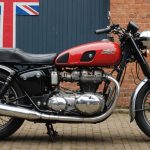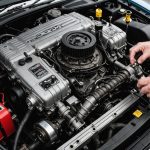Understanding Coolant Types
Selecting the right motorcycle coolant is crucial for optimal engine performance. Common coolant types used in motorcycles include ethylene glycol and propylene glycol. Ethylene glycol, traditionally more prevalent, offers effective high-temperature performance but carries toxicity concerns. In contrast, propylene glycol is considered safer but can be slightly less efficient at extreme temperatures. Both types serve as antifreeze, lowering the freezing point of the liquid to prevent engine damage in cold environments while also raising the boiling point to combat overheating.
Factors Influencing Coolant Selection
When choosing between these types of antifreeze, several factors must be considered. Compatibility with the motorcycle’s engine materials is essential to prevent corrosion and ensure longevity. The engine’s operating temperature range also plays a critical role. Riders in varying climates might prioritize different aspects — safety in colder temperatures versus efficiency in warmer ones. Additionally, environmental considerations favor propylene glycol due to its lower toxicity. Understanding these elements can guide riders in choosing the most suitable coolant for their specific needs, ensuring both performance and longevity are maintained.
Also to discover : Ultimate Guide to Achieving the Perfect Fit for Aftermarket Handlebars on Your Yamaha MT-10
These insights emphasize the importance of informed decision-making when it comes to motorcycle maintenance and performance enhancements. Such knowledge helps riders optimise their engines’ functionality under diverse conditions.
Importance of Coolant in Hot Weather
Motorcycle maintenance during hot weather necessitates attention to the importance of coolant. This liquid prevents engines from overheating, ensuring efficient operation. Coolant efficiently absorbs heat from the engine, maintaining optimal performance even when temperatures soar. When coolant levels are inadequate, the risk of overheating increases, potentially causing severe damage to the engine. Therefore, maintaining the correct coolant level is crucial in overheating prevention.
In the same genre : Optimal Timing for Inspecting Wheel Bearings on Your Triumph Daytona 675: A Comprehensive Guide
Detecting signs of coolant failure is vital. Warning indicators of potential overheating symptoms include the engine temperature gauge rising rapidly or heat emanating from the engine despite standard conditions. In extreme scenarios, steam may become visible, signalling a critical issue requiring immediate attention.
To avoid these pitfalls, adopt best practices for checking coolant levels. Regular inspection ensures that coolant is present and effective. To check, locate the coolant reservoir and verify it’s filled to the recommended level indicated on the container. Additionally, examine the coolant’s colour; a healthy coolant should appear clean and free of debris. Routine checks allow for timely refills or changes, significantly reducing the risk of overheating.
Always keep these tips in mind as part of your routine motorcycle maintenance to safeguard against heat-related complications.
Recommended Coolants for the Triumph Speed Triple
When searching for the best coolant for your Triumph Speed Triple, it’s essential to understand both manufacturer and aftermarket options.
Manufacturer Recommendations
Triumph provides specific recommendations for the Speed Triple’s cooling needs. The manufacturer emphasises using a coolant that is highly order-specific to ensure optimum performance. Triumph-approved coolant is crucial, as it is designed to work harmoniously with the motorcycle’s engine and cooling system, guaranteeing longevity and efficiency. Adhering to Triumph’s guidance is essential, since using non-recommended coolants may void the warranty and potentially cause engine issues.
Aftermarket Coolant Options
Beyond manufacturer specifications, a variety of aftermarket coolant choices offer appealing alternatives. Some brands provide enhanced thermal protection and anti-corrosion properties. Choosing an aftermarket coolant involves assessing its compatibility with the Triumph Speed Triple’s components and environmental conditions. Popular brands like Engine Ice and Motorex claim to enhance heat dissipation and offer extended engine life, with the ease of finding these products being an added bonus.
Customer Reviews and Ratings
Examining customer reviews can further guide your decision. Feedback from fellow Speed Triple owners highlights their experiences with various coolant recommendations. Many report improved engine performance and reduced maintenance downtime when using reputable aftermarket options. Prioritising user testimonials can offer peace of mind and add another layer of assurance to your choice.
Installation and Maintenance Tips
Ensuring your motorcycle’s coolant system is top-notch involves precise steps for flushing and coolant installation—crucial for optimal performance and longevity. Start by locating the coolant drain bolt, typically at the bottom of the engine. Once released, allow the old coolant to drain completely. This step ensures you’re not mixing old coolant, which might have compromised properties, with a fresh supply.
After draining, seal the bolt and prepare a fresh coolant mixture. During the coolant installation, it’s crucial to fill the system slowly to avoid air bubbles, which can hinder cooling efficiency. Always use a funnel to prevent spills and ensure accurate fill levels.
In hot weather, coolant upkeep is essential. Regularly check and top up coolant levels, and ensure the radiator cap is secured properly to maintain pressure. Additionally, inspect hoses for any signs of wear or leaks.
Avoid common pitfalls like using the wrong coolant type or neglecting scheduled replacements. Use manufacturer-recommended products and adhere to their schedules to keep your motorcycle running smoothly. Proper motorcycle maintenance can prevent overheating and extend your vehicle’s life, making it a worthwhile routine.
Potential Performance Issues and Solutions
Experiencing coolant performance issues in motorcycles can be frustrating, often resulting in overheating. Understanding common causes can help avoid damage and potential breakdowns. Let’s dive deeper into troubleshooting and preventive measures for these issues.
Motorcycle engines often face overheating due to low coolant levels, faulty water pumps, or clogged radiators. It’s vital to regularly check and maintain these components to ensure optimal engine care. Regular inspections can identify any leaks or faulty hoses early on, preventing further complications.
Troubleshooting overheating begins by ensuring the coolant reservoir is adequately filled and checking for leaks or blockages. A malfunctioning thermostat can also cause coolant performance issues by trapping heat within the system. Testing or replacing the thermostat may resolve such problems.
To avoid future overheating, follow these solutions:
- Regularly replace coolant as per the manufacturer’s guidelines.
- Clean the radiator and remove debris that may obstruct airflow.
- Inspect the water pump for efficient operation.
Ultimately, preventive care is crucial. Regular engine maintenance and timely coolant replacements are effective strategies to avoid overheating. Proper motorcycle engine care not only enhances performance but elongates the motorcycle’s lifespan, giving you a smoother ride every time.
Final Thoughts on Coolant Selection
Choosing the right coolant for your Triumph Speed Triple involves understanding crucial factors and using a thorough coolant selection guide. It’s essential to ensure optimal performance and longevity for your motorcycle.
Firstly, consider the chemical composition suitable for your bike. Use coolants specifically designed for motorcycles instead of opting for automotive varieties, which can cause corrosion and overheating. Always refer to the performance guidelines in your motorcycle’s manual for the most suitable options.
Several best practices should be adhered to when selecting coolant. These include checking for compatibility with your engine materials and ensuring anti-corrosive properties. Regularly flushing and refilling the coolant assists in maintaining the engine’s efficiency, avoiding overheating, and prolonging engine life. Proper storage and usage of coolants that match the climatic conditions you ride in is also resultantly beneficial.
Long-term benefits of appropriate coolant selection range from maintaining peak performance to preventing costly repairs. Experiment with different coolants to suit your personal preference, balancing performance needs and reliability. With the right approach, the effort invested in this critical aspect of motorcycle maintenance will reflect in the enduring performance of your Triumph Speed Triple.











